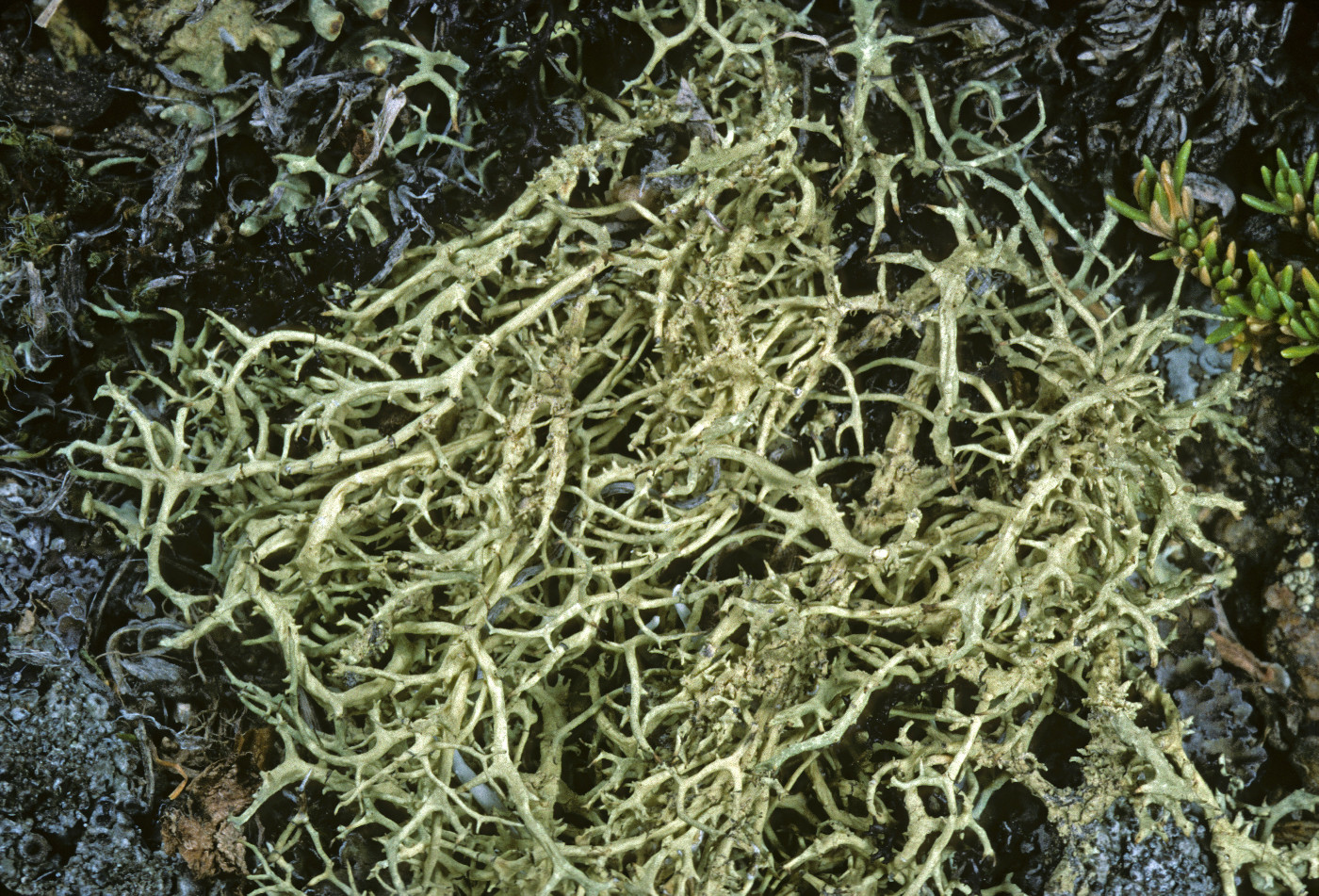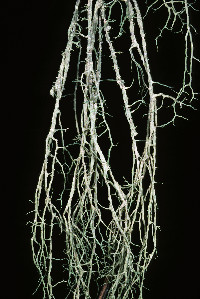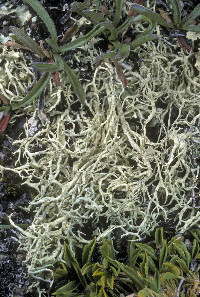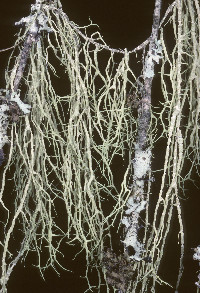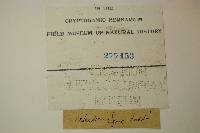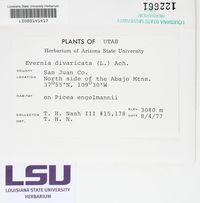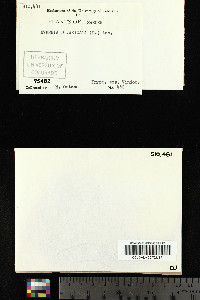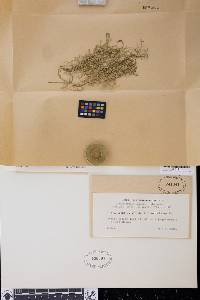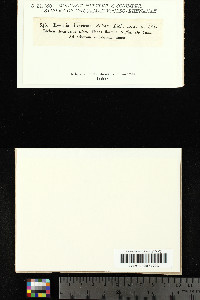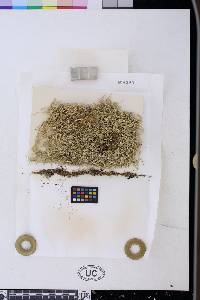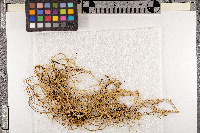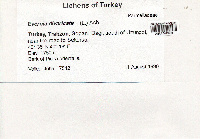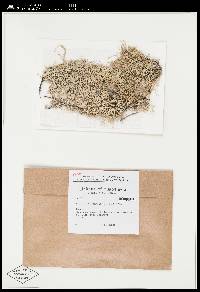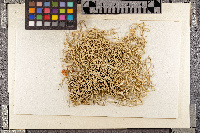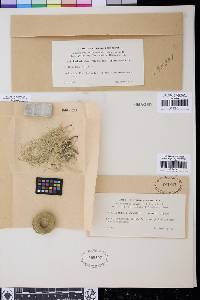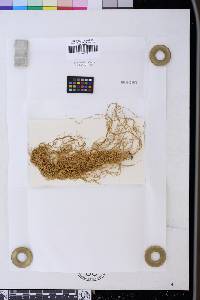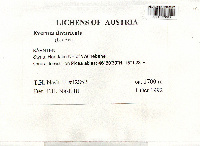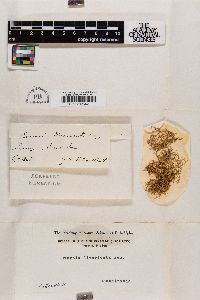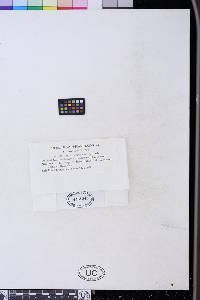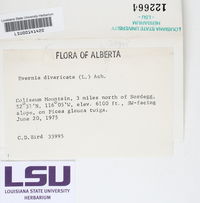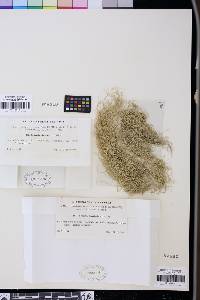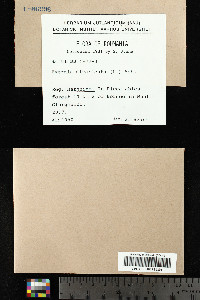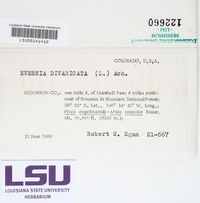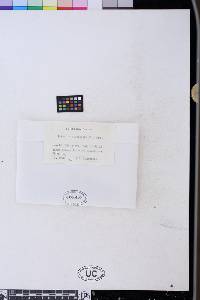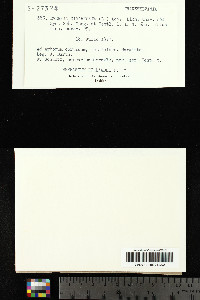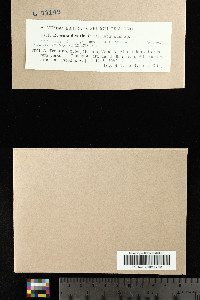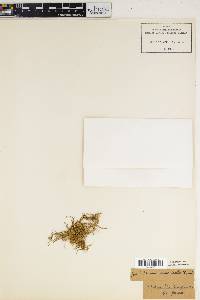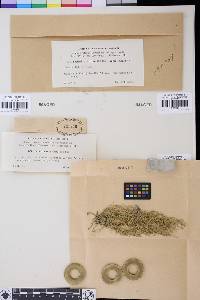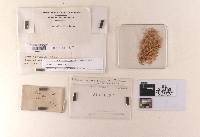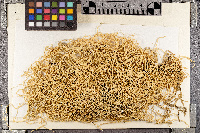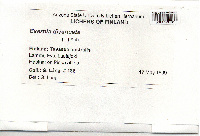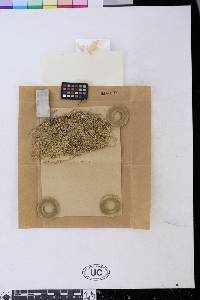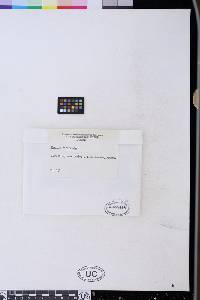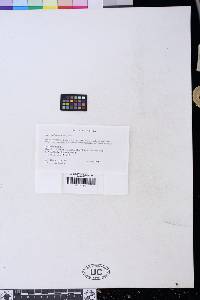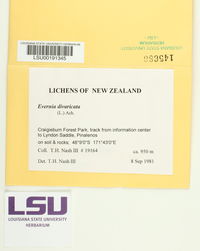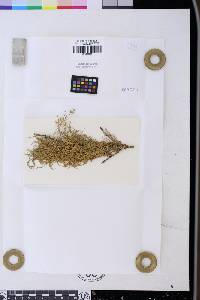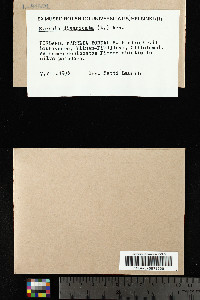
Consortium of Lichen Herbaria
- building a Global Consortium of Bryophytes and Lichens as keystones of cryptobiotic communities -
- Home
- Search
- Images
- Species Checklists
- US States: O-Z >
- US National Parks
- Central America
- South America
- US National Parks
- Southern Subpolar Region
|
|
|
|
Family: Parmeliaceae
[Usnea flaccida Hoffm.] |
Nash, T.H., Ryan, B.D., Gries, C., Bungartz, F., (eds.) 2002. Lichen Flora of the Greater Sonoran Desert Region. Vol 1. Thallus: usually pendulous, without evident base, 5-15 (30) cm long, not dorsiventral, concolorous on all sides, richly but irregularly branched, with mostly obtuse and rounded axils, becoming entangled, or sometimes main branches mostly parallel and matting together into strands branches: subterete to angular, or ± flattened just below the axils, very soft and flaccid, 0.5-1 (-2) mm wide, strap-shaped, within a given order of branching rather evenly thickned; with numerous but scattered; side branches: almost perpendicular but often curved away from the axil (divaricate), at first short and thorn-like, then becoming elongated (up to 2 cm) and further divided in a similar way, subcylindrical and towards the tips becoming subulate or often abruptly acuminate surface: greenish gray to grayish yellowish green or pale yellowish green when fresh (in herbarium turning grayish yellow or creamy yellow or mottled whitish, or eventually yellowish or reddish brown), often with irregularly elongated and branched maculae of a paler, more yellowish color than the rest, the finer branches becoming gray-brown, darkest at the extreme tips; smooth or often with one or several shallow to deep longitudinal grooves or channels separated by low, rounded ridges, sometimes also with small depressions and wrinkles, but without a distinctly reticulate pattern; cortex matt, often degenerating and roughened in places, and (especially in age) frequently cracking transversely, exposing the medulla; soredia and isidia absent medulla: fibrous to arachnoid and loose but often cohering as a strand c. 0.1-0.3 mm wide (usually less than half the width of the branch) Apothecia: very rare, sessile, lateral on the main branches, weakly margined, 2-6 mm diam.; disc: chestnut brown, roundish, plane; thalline margin (on underside): concolorous with thallus, rather flat, with wrinkles and veins throughout; hymenium: hyaline, upper part pale brown; paraphyses: short, dense, little branched, not septate, soon gelatinizing, c. 3 µm wide; hypothecium: hyaline asci: short, clavate, not stalked, 8-spored, c. 40-45 x 12-15 µm ascospores: adhering together, hyaline, somewhat greenish, moderately thick-walled, oblong-roundish, c. 6 x 3-4 µm, or when mature up to 8-10 x 4.5-5.5 µm Pycnidia: very rare, laminal, immersed Spot tests: cortex K-, C-, KC+ yellow, P-; medulla K-, KC+ yellow, P-, UV+ ice-blue Secondary metabolites: cortex with usnic acid; medulla with divaricatic acid. Substrate and ecology: pendulous, on stems or more often branches or twigs, mostly of conifers (especially spruce), in humid locations in montane to subalpine forests World distribution: western North America (rather sporadic), Europe; Near East, China Sonoran distribution: central to SE Arizona, 2700-3400 m, on Abies concolor, A. lasiocarpa, Picea engelmannii, Pinus aristata and Pseudotsuga menziesii. Notes: This species is sometimes entangled with Usnea spp., and can be superficially rather similar to Usnea cavernosa, which has a central strand and can occur in similar habitats. Although the exposed medulla of E. divaricata can resemble the axial strand of an Usnea, the remaining pieces of cortex in the Evernia tend to be rather loosely attached to it, and have mostly longitudinal grooves rather than roundish foveolae. At least in the Sonoran region, E. divaricata shows very little morphological variation compared to most fruticose lichens. Farther north an alpine variant is prostrate on ground and is usually less than 5 cm long. |
|
|
|
Powered by Symbiota

